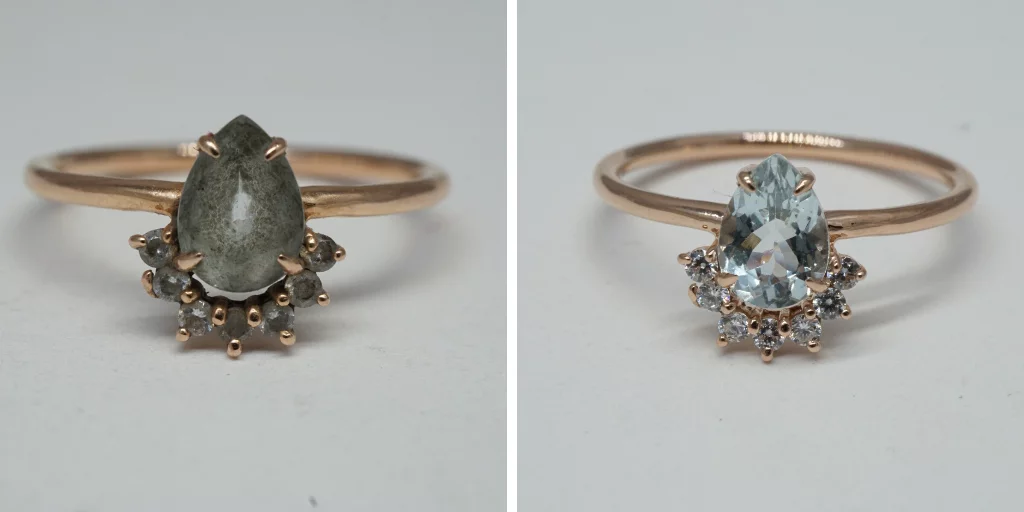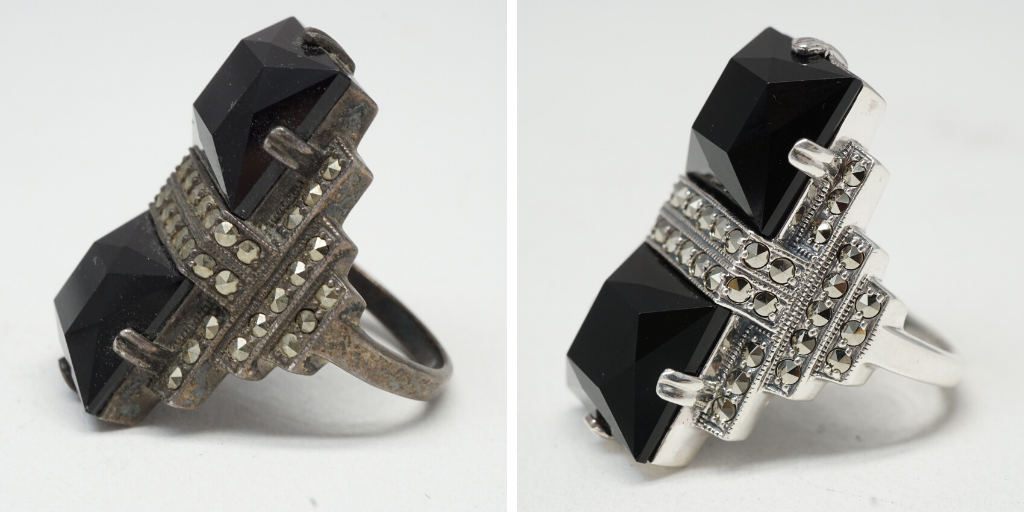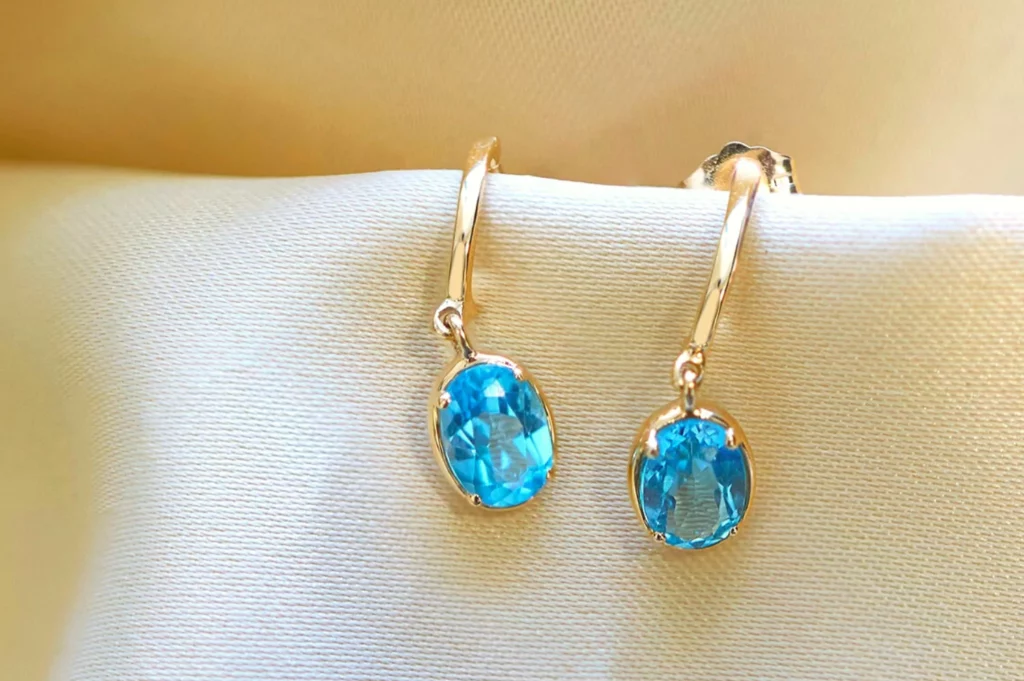Why You Should Consider Professional Jewelry Cleaning
Written by Annabelle
February 7, 2020

Feeling like your jewelry’s looking a bit dirty? You’re probably thinking; “I can just give it a good scrub on my own and that’ll get most of the dirt out.” Before you do that, we’re here to stop you from embarking on a potentially disastrous DIY project. Read on to learn more about professional jewelry cleaning and how to properly get your items back to their bright and shiny state without destroying your favorite pieces.
Destroying Jewelry Cleaning Myths
You’ve probably heard that lemon, dish soap, vinegar, baking soda, toothpaste, or even bleach can be used to clean your jewelry. In truth, only dish soap is safe to use for cleaning, and even then it doesn’t do an effective, thorough job to fully clean and restore your item. Anything stronger than that (such as acidic solutions) can severely damage soft stones such as turquoise, pearls, and coral.
But why? Jewelry can look bad thanks to dirt and tarnish. Dirt is self-explanatory; dead skin, lotion, and other gunk can accumulate in the nooks and crannies of your jewelry over time. Tarnish, on the other hand, is a chemical reaction that changes the color of the metal in your jewelry. While you can definitely remove dirt at home with some scrubbing, tarnish usually requires a more complex polishing compound to restore the metal to its original state. Toothpaste has a reputation for taking tarnish off, but it gets stuck behind settings and hardens to a rock-like consistency while leaving scratches on your jewelry.
So how can you get your jewelry cleaned without damaging it? Take it to a jeweler for professional jewelry cleaning!
How A Professional Jeweler Cleans Your Jewelry
When you bring your items to a jeweler, the first thing they’ll do is assess the item. Is it dirty, tarnished, or both? This will affect how they proceed with cleaning your item.
If it’s tarnished, the jeweler will then assess whether or not the item is plated. Gold-plated items can tarnish over time, and lose color in the process. While the jeweler can remove the tarnish by polishing the item, that will completely remove all of the plating, requiring the jeweler to replate the item.
Even if the metal isn’t tarnished, it could still have scratches and dents that need to be buffed out. The jeweler rubs the jewelry against a powered polishing wheel that is designed to gently scrub the surface until the blemishes and tarnishing come out. This process generates polishing residue, or sticky black metal filings that need to be washed off.
The next step is to clean the jewelry. Unlike what you do at home, a jeweler doesn’t wash your jewelry by hand, as it’s inefficient and doesn’t get all of the dirt out of the piece. Instead, they submerge your item into an ultrasonic cleaner. This is a tank filled with either solution or water, and soundwaves generate bubbles that knock dirt out of places you cannot reach by hand.
Next, the jeweler cleans off the remaining residue with a steam cleaner, which is a high-pressure nozzle of concentrated steam that gently “blasts” your item. As abrasive as it sounds, it actually doesn’t hurt your jewelry and can quickly remove stubborn bits of dirt. For most items, this is the final step of the process.
Plated jewelry, or white gold jewelry, go through one additional step in the professional jewelry cleaning process. As mentioned, the polishing process removes tarnish, but it also removes plating. To restore the original look of the item, the jeweler submerges the piece into a plating tank. Electricity runs through the tank, fusing gold or rhodium to the surface of the jewelry.
Now you’re up-to-date on professional jewelry cleaning! Instead of subjecting your precious pieces to improper cleaning techniques and risk damaging them at home, get a jeweler to clean them. If you have dirty jewelry, comment below and we can help you out.





Thanks for sharing this with us,Your blog is very interesting and Informative, and I would try to come here time and again for more updates. I will keep visiting you blog.